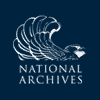To George Washington from Thomas Jefferson, 2 November 1792
From Thomas Jefferson
Philadelphia Nov: 2. 1792.
Sir,
I have the honor to inclose you copies of a letter I have received from the Governor of Virginia and of sundry papers which it covered on the subject of that part of the boundary between that State and the territory of the United States south of the Ohio, which has never yet been authoritatively settled, and to observe that an extension of the same line will form the boundary between the same territory and the State of Kentucky.1 There being then three parties interested in the establishment of this line, it will rest with the wisdom of the Legislature to take such measures as they shall think best for establishing it by common consent or otherwise for instituting judiciary proceedings for it’s establishment, according to the provision made in the constitution.2 As the papers herewith transmitted will fully explain the case in question, I need not recapitulate their contents. I have the honor to be with sentiments of the most perfect respect and attachment, Sir Your most obedient, and most humble servant
Th: Jefferson
LS (letterpress copy), DLC: Jefferson Papers; copy, DNA: RG 46, Second Congress, 1791–93, Senate Records of Legislative Proceedings, President’s Messages; LB, DLC:GW; LB, DNA: RG 59, Domestic Letters. Jefferson added the words “The President of the U.S.” at the end of the text of the letterpress copy. Jefferson signed the copy in DNA: RG 46.
In 1779 North Carolina and Virginia appointed commissioners to survey their common border west of the Allegheny Mountains along the 36º 31′ parallel. Disagreement between the parties led to the creation of two parallel lines two miles apart, Walker’s line to the south and Henderson’s line to the north. By the end of 1791 both states agreed to recognize Walker’s line as the official boundary.
The creation of the Southwest Territory in 1790 from the western lands ceded to the federal government by the southern states, however, extended the controversy, and the admission of the state of Kentucky, a former district of Virginia, into the union in June 1792 further complicated the issue. The Treaty of Holston with the Cherokees in 1791 added to the confusion and conflicting claims. Virginia’s boundary dispute with the Southwest Territory evolved into a dispute with the newly created state of Tennessee in 1796 and was not settled until 1803 when both states agreed to a line drawn halfway between Henderson’s and Walker’s lines. It was 1820 before Kentucky and Tennessee both accepted Walker’s line as their common border. For more information, see 125–27, 129–34, 160–64.
1. Jefferson enclosed a copy of Henry Lee’s letter to him of 24 Oct. from Richmond, in which Lee expressed concern about the “establishment of the boundary line” between North Carolina and Virginia. The copies of Lee’s enclosed papers include the proceedings of the North Carolina legislature on 11 Dec. 1790; an undated committee report of the North Carolina legislature; “An Act concerning the Southern boundary” passed by the Virginia legislature on 7 Dec. 1791; a summons issued to Can Baily, Charles Wolf, James Anderson, and James Campbell on 18 June 1792 by a court in Sullivan County, Southwest Territory, for failure “to appear at the last General Muster”; a receipt for a fine paid by Charles Wolf to Sullivan County on 4 Aug. 1792; a letter from Gilbert Christian to Arthur Campbell of 8 Aug. 1792; an extract of a letter from William Blount, governor of the Southwest Territory, to Lee of 2 Sept. 1792 advising that he will continue to assert territorial control over the contested area until the federal government instructs him otherwise; depositions from Charles Wolf and James Campbell, both of 6 Sept. 1792, relating to fines imposed by the authorities of the Southwest Territory on residents living on the contested lands; and an undated copy of Joseph Martin’s letter to Lee of 20 Oct. 1792 reporting that most of the families living in the disputed area wanted to remain in Virginia (see the letterpress copies of these enclosures in DLC: Jefferson Papers; see also 4:200–208, and 6:106).
2. GW submitted Jefferson’s letter with its enclosures to the U.S. Senate and House of Representatives on 9 Nov. 1792.

![University of Virginia Press [link will open in a new window] University of Virginia Press](/lib/media/rotunda-white-on-blue.png)
